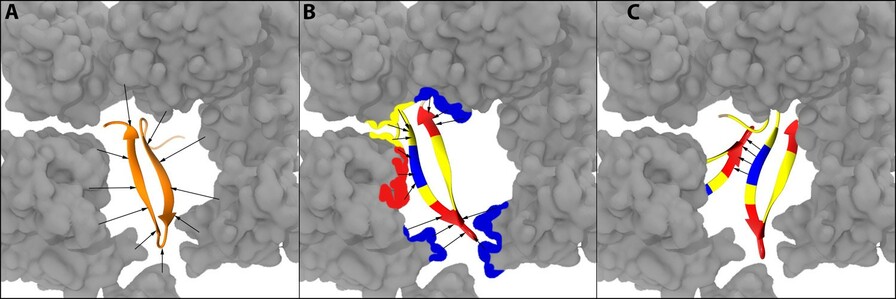Weak Chemical Interactions Drive Protein Evolution
Weak interactions between proteins in the cell play a critical role in biological processes. Weak interactions are very common and can add up in the cell, leading to signaling, chaperoning and other important activities. They also generate a spatio-temporal heterogeneous cytoplasm.

The project Weak Chemical Interactions That Drive Protein Evolution: Crowding, Sticking, and Quinary Structure in Folding and Function, led by Center for Biophysics and Quantitative Biology (CBQB) affiliate Professor Martin Gruebele, discusses three factors that drive protein evolution by contributing to weak interactions inside the cell: crowding, sticking, and quinary structure.
All three of these can impact cell fitness in different ways. Studies from the Gruebele group have shown how crowding can stabilize proteins; sticking can lead to aggregation; and quinary structure can lead to multi-protein assemblies in cells.
A recent perspective from the group discussed key factors affecting protein stability, including temperature, pressure, pH, macromolecular crowding and osmolytes. “We were able to elucidate the rich phase diagram that a protein exhibits while undergoing unfolding in the presence of large macromolecules. Going forward, I plan to explore the effect of small molecules on folding and stability of essential enzymes,” says CBQB graduate student Mayank Boob.
The research in the group builds on three different organizational levels – solution studies, complex engineered environments and live cells—to understand protein stability and interactions. Solution environments that can mimic the cellular environment were created, and experiments were conducted to this effect in live cells. “My current project focuses on how protein dimer association is affected by in-cell crowding,” says CBQB graduate student Yuhan Wang.
“To modulate in-cell crowding, we perturb osmotic pressure, which regulates the water influx/efflux from the cell and in turn the cell volume. This effectively makes a live cell as easy to manipulate as concentration is in a test tube to study the effects of cellular crowding on protein interactions,” adds Yuhan.
The techniques developed by the group will allow for studying even more complex multi-protein assemblies. In particular, the research team is focusing on studying quinary interactions between capsid proteins of Hepatitis B virus (HBV). “Our objective is to time-resolve viral capsid assembly and probe the viral infection cycle throughout a live cell using fluorescence imaging,” says graduate student Gopika Gopan.
This study is going to shed light on the mechanism of viral capsid assembly/disassembly, a crucial step in the virus infection cycle. This will guide the design of effective therapeutic agents against viruses.
The complete findings of this research study are available in Chemical Reviews.
Published January 30, 2020 11:15